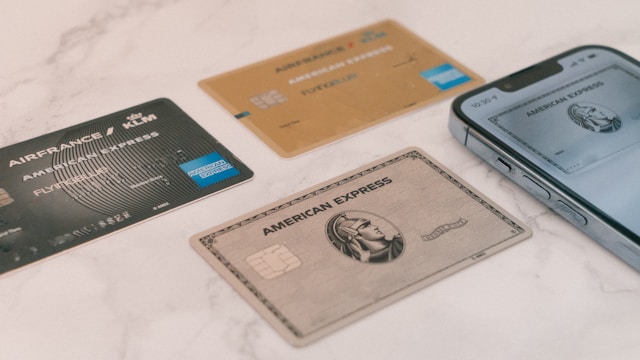Introduction
Credit card debt is a common financial challenge. According to recent surveys, over 50% of Americans carry credit card debt each month, with the average balance exceeding \$6,000. The high interest rates on unpaid balances can make debt feel like a never-ending cycle.
The good news? With a strategic approach, discipline, and some smart financial tools, you can pay off your credit card debt efficiently. This guide covers everything from understanding your debt to creating a long-term payoff plan.
1. Understand Your Credit Card Debt
Before you start paying off debt, it’s critical to analyze your financial situation.
Key Factors to Consider:
| Factor | What to Know |
|---|---|
| Balance | The total amount you owe on each card. |
| Interest Rate (APR) | The annual percentage rate determines how much extra you pay over time. |
| Minimum Payment | The least amount you must pay to avoid late fees. |
| Fees | Late fees, over-limit fees, and foreign transaction fees can add up. |
Pro Tip: Check your credit card statements carefully for hidden fees and errors. Even a small discrepancy can affect your payoff plan.
2. Choose the Right Payment Strategy
Two popular methods exist for tackling credit card debt: Debt Avalanche and Debt Snowball.
a) Debt Avalanche Method
- Focus on the highest interest rate card first.
- Continue paying minimums on other cards.
- Benefits: Minimizes interest over time, saving money.
b) Debt Snowball Method
- Focus on the smallest balance first.
- Once it’s cleared, move to the next smallest balance.
- Benefits: Provides psychological motivation and a sense of accomplishment.
Example Scenario:
| Card | Balance | Interest | Method Choice |
|---|---|---|---|
| Card A | \$2,000 | 22% | Avalanche: Paid first |
| Card B | \$500 | 18% | Snowball: Paid first for motivation |
Choose the method that best suits your personality. Some people prioritize saving money, while others need quick wins to stay motivated.
3. Make More Than the Minimum Payment
Paying only the minimum is the fastest way to stay in debt.
Why Minimum Payments Are a Trap:
- A \$5,000 balance at 20% APR, paying only \$100/month, could take over 10 years to pay off.
- You would pay more than \$7,000 in interest over that time.
Solution:
- Pay as much as you can afford each month.
- Even \$50–\$200 extra can reduce your payoff time and interest significantly.
Example:
| Payment | Months to Pay Off | Total Interest Paid |
|---|---|---|
| \$100/month | 127 months | \$7,022 |
| \$200/month | 56 months | \$2,732 |
| \$300/month | 33 months | \$1,675 |
Every extra dollar counts. Make it a priority in your budget.
4. Consolidate or Refinance High-Interest Cards
If multiple cards have high interest rates, consider:
- Balance Transfer Credit Cards: Move debt to a card with 0% introductory APR for 12–18 months.
- Personal Loans: Pay off credit cards with a lower-interest loan.
Caution:
- Watch for transfer fees (typically 3–5%).
- Ensure you pay off the balance before the promotional rate ends.
Consolidation can save thousands in interest if done correctly.
5. Cut Unnecessary Expenses
Freeing up extra money accelerates debt payoff.
Practical Tips:
- Track spending using apps like Mint, YNAB, or Personal Capital.
- Cancel unused subscriptions (streaming, memberships).
- Reduce dining out or ordering takeout.
- Redirect any small savings toward your credit card balance.
Example:
- Skipping a \$10 daily coffee = \$300/month toward your debt.
- Canceling two \$15 subscriptions = \$30/month.
These small sacrifices compound over time.
6. Automate Payments
Automation keeps you consistent and avoids late fees:
- Set up automatic minimum payments.
- Schedule extra payments if possible.
- Ensure funds are in your account to avoid overdraft fees.
Automation makes debt repayment less stressful and more reliable.
7. Avoid Adding New Debt
While paying off credit cards, avoid creating new debt:
- Use cash or debit cards for everyday spending.
- Freeze cards online if temptation is high.
- Avoid “buy now, pay later” options that can increase debt.
Discipline is key. Without it, your efforts can be undone.
8. Increase Your Income
Boosting your income can speed up debt payoff:
- Take a side hustle like freelancing, tutoring, or driving for delivery apps.
- Sell unused items online (e.g., eBay, Facebook Marketplace).
- Use tax refunds, bonuses, or windfalls for lump-sum payments.
Example:
- Extra \$500/month from a side job = \$6,000/year toward debt.
- Can pay off a \$5,000 balance in less than a year instead of several years.
9. Monitor Your Progress
Tracking progress keeps motivation high:
- Monitor balances monthly.
- Celebrate milestones (first card paid off, 50% debt cleared).
- Adjust your plan if your income or expenses change.
Seeing progress reinforces good financial habits and encourages consistency.
10. Maintain a Good Credit Score
Even while paying off debt, it’s important to protect your credit:
- Keep utilization below 30% on remaining cards.
- Don’t close paid-off cards immediately (affects credit history).
- Make timely payments to avoid late marks.
Maintaining a healthy credit score ensures lower rates and better financial opportunities in the future.
11. Use Tools and Apps
Several tools can help you manage debt efficiently:
- Tally – Automates payments and optimizes interest savings.
- Undebt.it – Tracks debt payoff with snowball or avalanche methods.
- Credit Karma – Monitors credit score and tracks payments.
Using technology makes repayment faster, smarter, and less stressful.
12. Seek Professional Help If Needed
Sometimes debt is overwhelming. Don’t hesitate to seek professional guidance:
- Credit Counselors: Nonprofit services help you create a budget and payoff plan.
- Debt Management Programs: Consolidate payments and negotiate interest rates.
Professional advice can provide clarity, peace of mind, and an actionable plan.
13. Frequently Asked Questions (FAQs)
Q1: Can I pay off my credit card faster without extra income?
A1: Yes. Cut discretionary spending, use balance transfers, and automate payments to speed up payoff.
Q2: Should I focus on one card or multiple cards?
A2: Use either the snowball or avalanche method depending on whether you value psychological wins or saving on interest.
Q3: Is it better to pay off debt or save money?
A3: Prioritize paying off high-interest debt first, as interest often outweighs savings gains.
Q4: How do balance transfer cards work?
A4: They move existing debt to a card with a 0% APR for a set period, allowing you to pay down principal faster.
Q5: Will paying off debt improve my credit score?
A5: Yes, consistently reducing balances and paying on time improves credit utilization and payment history, boosting your score.
Conclusion
Paying off your credit card debt requires strategy, discipline, and consistency. By understanding your debt, choosing the right repayment method, cutting unnecessary expenses, increasing income, and using financial tools, you can achieve financial freedom faster than you think.
Start today. Make a plan, take action, and celebrate every milestone. Your future self will thank you.
Remember: Every dollar you pay today saves you dollars in the future.



